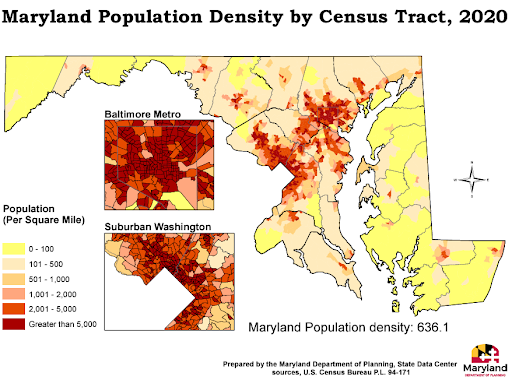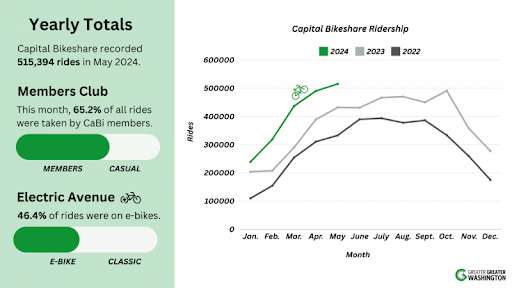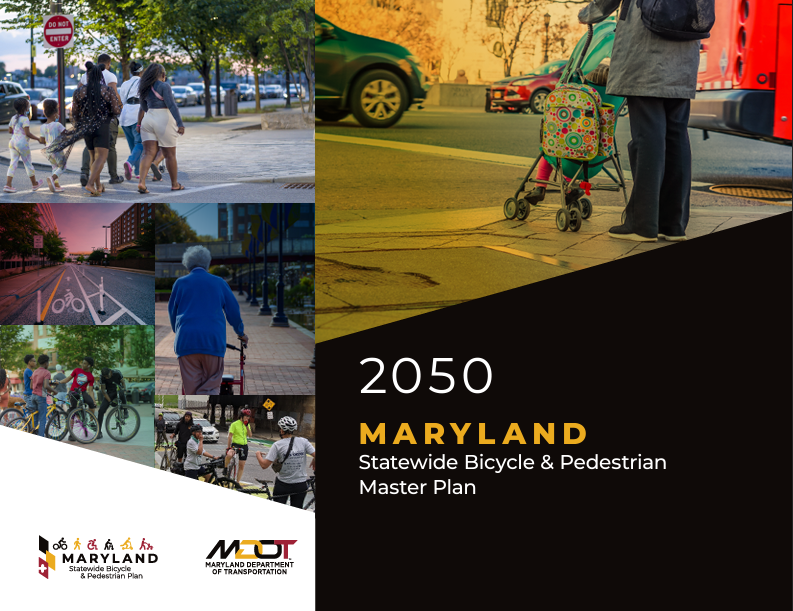Navigating the Future: Maryland Department of Transportation’s Support for State Micromobility Programs
15 minutes Author: Shared-Use Mobility Center Date Launched/Enacted: Jul 8, 2024 Date Published: July 9, 2024

Since 2021, the Shared-Use Mobility Center (SUMC) has convened an Innovative Transit Micromobility Integration (ITMI) working group. In these working group meetings, representatives from transit agencies discuss challenges and strategies they face in integrating micromobility programs into their transit systems and share knowledge and resources to learn from each other’s experiences. This case study is part of SUMC’s Mobility Innovation Collaborative program and incorporates knowledge gained from a guest presentation at one of these working group meetings.

Watch a presentation from Meg Young, Deputy Director of Active Transportation and Micromobility at the Maryland Department of Transportation.
Originally published July 2024, revised March 2025.
Introduction
The Maryland Department of Transportation (MDOT), in coordination with local jurisdictions and universities, currently assists in operating micromobility programs throughout the state, particularly the two largest metropolitan areas – Baltimore, MD, and Washington, DC. MDOT works to improve regional micromobility programs by working with local jurisdictions to improve connectivity and accessibility across the state and into Washington. MDOT relies on the coordination and collaboration of its different administrations, including the Aviation Administration, Port Administration, Motor Vehicle Administration, and State Highway Administration, to improve and expand accessibility among these micromobility services.
Micromobility Options in Maryland
Maryland is a unique state with 23 counties and one independent city (Baltimore). In addition, Maryland is home to a handful of large metropolitan areas, the largest being Baltimore, and the Washington, D.C. suburbs, including College Park, Bethesda, and Rockville. Despite having both a relatively high population and population density for a US state, only two cities have a population of 100,000 residents or more. Maryland has seen mixed success in its bike-share-specific programs, with the programs with the most utilization being in metropolitan areas, tourist-heavy areas, and near college campuses. Dockless bikeshare programs have also emerged in Maryland, with some cities switching operations from docked to dockless a few years after launching.

Maryland Population Density. Credit: Maryland DOT
The DC Metropolitan Area – Prince George’s and Montgomery Counties
The Washington metropolitan area, which includes Maryland’s Prince George’s and Montgomery Counties, has recently seen record-breaking ridership trends for its bikeshare program, Capital Bikeshare. This upward trend is particularly associated with e-bikes, which were introduced in 2020. Ridership has increased tenfold since the system launched in 2010 and has increased 31.3% from 2023.

Graph and table depicting Capital Bikeshare Statistics Source: GGWashington
Uniquely, College Park, in Prince George’s County, has two different operators for their bikeshare. The University of Maryland and the City of College Park partnered with micromobility company Veo in 2019 to provide bike and scootershare to the community and college campus. This dockless program was the first of its kind for the state and proved successful in both ridership and operations, largely due to e-scooter and e-bike regulations through the University of Maryland’s transportation office. The transportation office diligently ensures that bike and scooter parking is very clearly marked and that bikes and scooters are not obstructions.
In 2023, College Park signed an agreement with Capital Bikeshare to expand the bike share program into the City of College Park, where they installed one docking station, and expanded dockless service to College Park’s municipal boundaries. College students and College Park residents alike now have the opportunity to pick between either or both of the bikeshare programs available to them. MDOT has provided funding for parking expansion projects for the docked and dockless programs in College Park through their state-funded Kim Lamphier Bikeways Program.
Baltimore Metropolitan Area
The City of Baltimore has tried a few different bikeshare options and has ultimately settled on a dockless bikeshare program run by a variety of operators (in the past, Baltimore has offered Lime, Spin, and Bird scooters), depending on permitting. Baltimore’s pilot program, Baltimore Bike Share, was a docked bikeshare program owned by the city and operated by private vendors that ended just a few years after implementation due to operational costs. After the two-year pilot, Baltimore switched to a dockless program and has been working with various private vendors since 2019. Baltimore saw more riders in the first two weeks of the dockless program than in the first two years of the docked program.

A Baltimore Bike Share user. Credit: Elvert Barnes
Future of Maryland Micromobility
As micromobility continues to be a reliable transportation option in metropolitan areas across Maryland, MDOT is making micromobility a priority in terms of safety and accessibility by leveraging opportunities presented in federal funding. By working in tandem with the goals of MDOT’s 2050 Bicycle and Pedestrian Master Plan, federal funding helps make MDOT’s goals a reality. The master plan specifically calls out projects that work to enhance safety for micromobility infrastructure such as protected bike lanes, optimal locations for new docked bikeshare programs, or new micromobility hubs. Working closely with the State Highway Administration (SHA) and the Maryland Transit Administration (MTA), MDOT explores locations for these new hubs and docks while ensuring safety, accessibility, and connectivity to existing transportation infrastructure. Furthermore, the plan outlines guidelines to address safety, rules of the road, and micromobility usage in partnership with the Maryland Vehicle Administration.
The integration of micromobility with transit systems is crucial for enhancing accessibility for residents, especially near transit lines and workplaces to provide multimodal transportation options that are beneficial and applicable across various jurisdictions. Moreover, training programs in cities like Baltimore for mechanics specializing in e-scooters, e-bikes, EVs, and e-buses can support the maintenance and expansion of micromobility options. With an extensive list of funding sources and a focus on connections to transit and proximity to workplaces, MDOT can foster an environment where all users have access to the latest micromobility technologies.
Conclusion
As Maryland ranges from large metropolitan areas like Baltimore and the Washington, DC suburbs to small cities like Annapolis, unique challenges and opportunities are presented for mobility options. The mixed success of bikeshare programs in Maryland has underscored the need for uniquely tailored approaches considering locality and data-inspired solutions. MDOT’s focus on micromobility, supported by federal funding and the 2050 Statewide Bicycle and Pedestrian Master Plan, positions the state to efficiently enhance its transportation network while prioritizing safety and accessibility when implementing new micromobility options that integrate with current transportation systems. With a robust funding strategy, including programs funded by the state, MDOT aims to ensure that all residents have access to efficient, safe, and innovative micromobility options, whether in densely populated urban centers or smaller communities.
